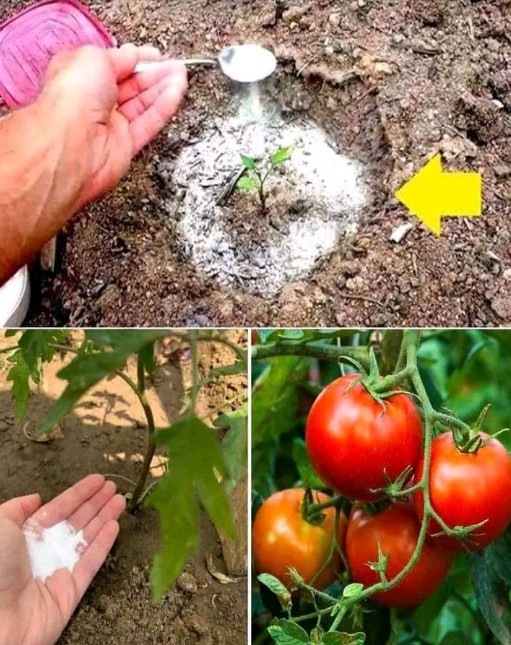Baking soda is a versatile and eco-friendly tool that can work wonders in your garden. It’s affordable, safe, and readily available, making it a gardener’s secret weapon for addressing common gardening challenges. Here are ten ingenious ways to use baking soda in your garden:
1. Natural Fungicide
Baking soda is a natural remedy for fungal diseases like powdery mildew, black spot, and blight that often affect plants:
- Recipe: Mix 1 tablespoon of baking soda, 1 gallon of water, and a few drops of liquid dish soap.
- Application: Spray the solution on affected plants weekly to prevent and treat fungal growth.
This solution is safe for vegetables, fruits, and ornamental plants, ensuring they remain healthy and productive.
2. Pest Repellent
Baking soda can deter pests like ants, slugs, and cockroaches:
- For Ants: Mix equal parts of baking soda and sugar. Sprinkle the mixture where ants are active; the sugar attracts them, and the baking soda disrupts their digestion.
- For Slugs: Sprinkle a thin layer of baking soda around plants to repel slugs without resorting to harsh chemicals.
3. Weed Control
Baking soda’s sodium content can help in controlling weeds, especially those in cracks and crevices:
- How to Use: Sprinkle baking soda directly on weeds growing in walkways or driveways. Be cautious not to use it near desirable plants, as it can also harm them.
4. Soil pH Tester
You can use baking soda to test your soil’s pH level quickly:
- How to Test: Take a small sample of soil and moisten it with water. Sprinkle baking soda on it—if it bubbles, your soil is acidic (pH below 7).
This simple test can guide you in choosing the right amendments for your garden soil.
5. Sweeten Tomatoes
For gardeners growing tomatoes, baking soda can improve the flavor:
- How to Use: Sprinkle a small amount of baking soda around the base of your tomato plants.
- Why it Works: Baking soda lowers the soil’s acidity, making tomatoes taste sweeter.
Use sparingly to avoid altering the soil’s overall pH balance too much.
6. Clean Garden Tools
Baking soda is an excellent natural cleaner for garden tools:
- How to Clean: Make a paste of baking soda and water, then use it to scrub dirt, rust, and grime from tools.
- Benefits: It’s non-abrasive and helps prevent rusting, keeping your tools in top condition.
7. Freshen Compost Piles
Compost piles can sometimes develop unpleasant odors. Baking soda can help:
- How to Use: Sprinkle baking soda sparingly over the compost to neutralize odors.
- Caution: Avoid excessive use, as it may slow down the decomposition process.
8. Keep Cut Flowers Fresh
If you love bringing flowers indoors, baking soda can extend their freshness:
- Recipe: Add 1 teaspoon of baking soda to the water in a vase of cut flowers.
- Result: This helps keep the water cleaner, preventing bacterial growth that causes flowers to wilt prematurely.
9. Protect Cabbage and Lettuce from Caterpillars
Caterpillars can be a nuisance in vegetable gardens:
- How to Use: Mix equal parts baking soda and flour, then dust it over cabbage, kale, and lettuce leaves.
- Effect: The mixture is safe for plants but disrupts caterpillars’ feeding, keeping your crops safe.
10. Clean Up Outdoor Furniture and Patios
Baking soda can clean your garden spaces too:
- For Furniture: Mix baking soda with water to form a paste and scrub patio furniture.
- For Patios: Sprinkle baking soda on stained areas and scrub with a damp brush.
This keeps your outdoor spaces looking fresh and inviting without harsh chemicals.
Final Tips
While baking soda is an effective tool in the garden, it’s important to use it sparingly to avoid potential harm to plants or soil. Always test solutions on a small area before widespread application. With these clever uses, baking soda can become your go-to ally for maintaining a healthy and vibrant garden!
